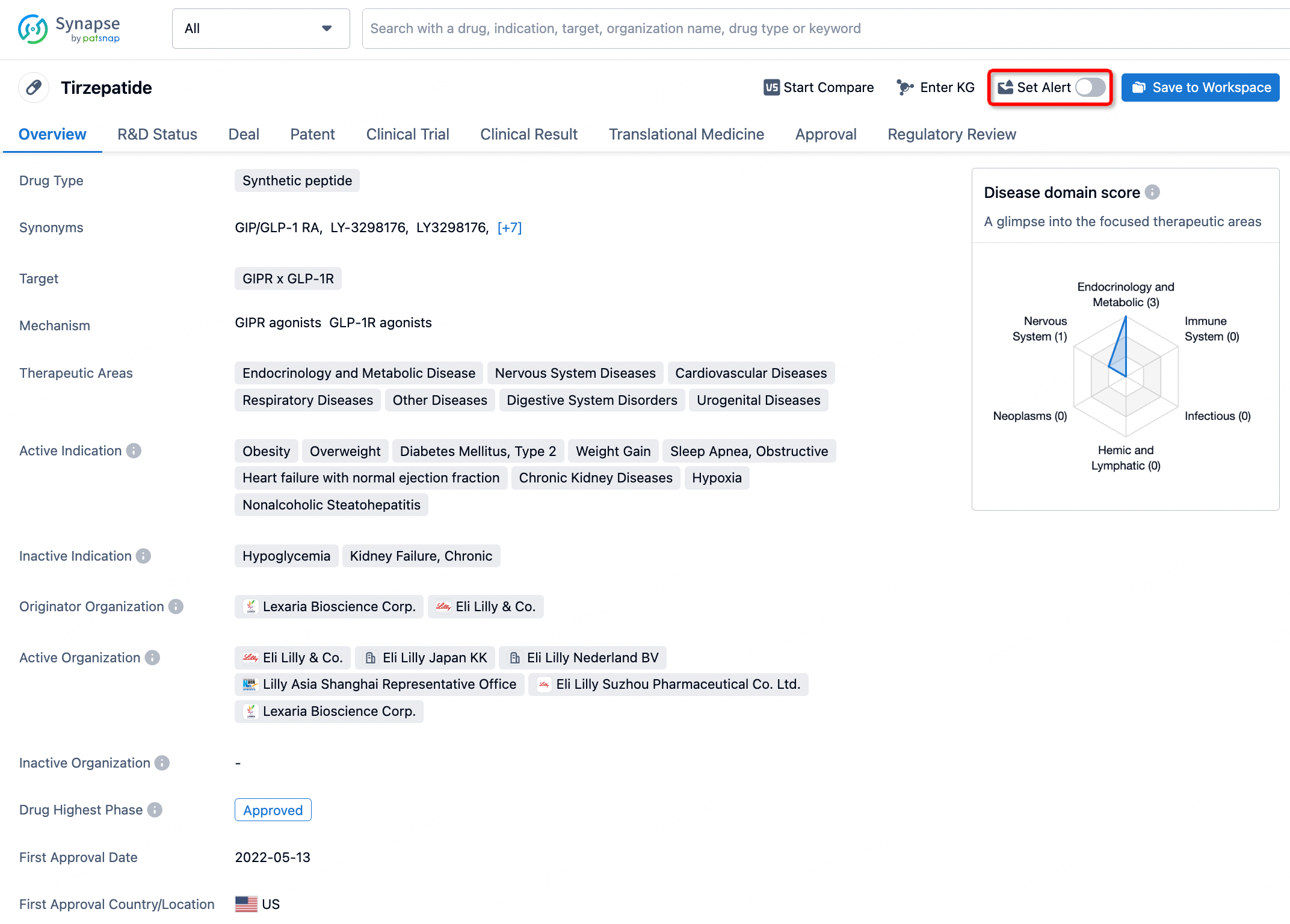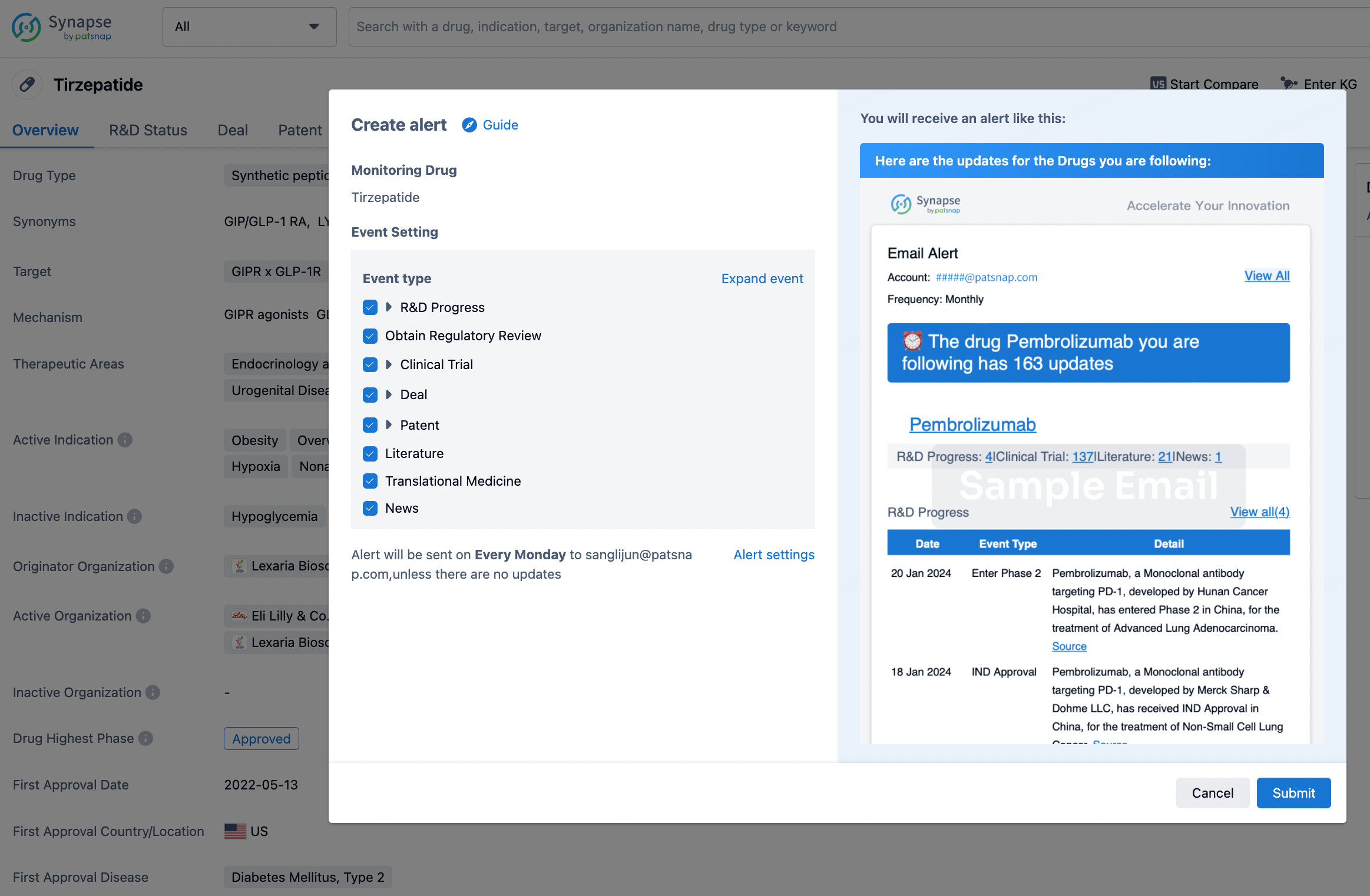Request Demo
What is Troxipide used for?
15 June 2024
Troxipide is a relatively lesser-known but significant pharmaceutical compound that has gained attention in recent years for its potential benefits in treating various gastrointestinal disorders. Sold under trade names like Troxip, Troxipide has shown promise as a gastroprotective agent and is typically prescribed for conditions such as gastritis and dyspepsia. Originally developed in Japan, Troxipide has undergone various phases of clinical trials and research to validate its efficacy and safety. The drug primarily targets mucosal inflammation and aids in the repair of the gastric lining, making it a valuable addition to the range of treatments available for gastrointestinal issues.
The development and research surrounding Troxipide have involved multiple institutions and pharmaceutical companies. These organizations have invested years into studying the pharmacology, mechanism of action, and long-term effects of the drug. Owing to its unique properties and effectiveness, Troxipide has carved a niche for itself in the therapeutic landscape, particularly in Asia and gradually expanding to other parts of the world.
Troxipide Mechanism of Action
Troxipide operates through a multifaceted mechanism of action that targets various aspects of gastrointestinal health. One of the primary ways it works is by modulating the production of gastric mucosa. Unlike other drugs that solely rely on acid suppression, Troxipide promotes mucosal defense and repair mechanisms. It enhances the secretion of mucin, a glycoprotein component of mucus, which acts as a protective barrier against stomach acids and pathogens.
Furthermore, Troxipide exhibits anti-inflammatory properties. It inhibits the production of pro-inflammatory cytokines and mediators, such as TNF-alpha and IL-1 beta. This action reduces inflammation and aids in quicker healing of the gastric lining. Additionally, Troxipide has been shown to improve microcirculation within the gastric mucosa, which further supports mucosal protection and repair.
The drug also has antioxidant properties, which contribute to its gastroprotective effects. By neutralizing free radicals, Troxipide minimizes oxidative stress, a common factor in gastrointestinal ailments. This combination of actions makes Troxipide a comprehensive treatment option for conditions characterized by mucosal damage and inflammation.
How to Use Troxipide
Troxipide is typically administered orally in the form of tablets. The dosage and frequency depend on the specific condition being treated as well as the patient's overall health and response to the medication. For adults, the common dosage ranges from 100 mg to 200 mg, taken two to three times daily. It is crucial to follow the prescribing physician's guidelines to ensure optimal efficacy and minimize potential side effects.
One of the advantages of Troxipide is its relatively rapid onset of action. Most patients begin to experience relief within a few days of starting the medication, although full therapeutic benefits may take a couple of weeks to manifest. The drug can be taken with or without food, but it is generally recommended to take it after meals to enhance its gastroprotective effects.
It's worth noting that the duration of treatment with Troxipide may vary. For acute conditions, a short-term course may suffice, whereas chronic conditions might require prolonged use. As with any medication, it is essential to complete the prescribed course even if symptoms improve, to avoid recurrence or incomplete treatment of the condition.
What is Troxipide Side Effects
While Troxipide is generally well-tolerated, it is not without potential side effects. Common side effects include gastrointestinal disturbances such as nausea, vomiting, and diarrhea. These symptoms are usually mild and tend to resolve on their own as the body adjusts to the medication.
More severe but rare side effects can include allergic reactions, manifested by rash, itching, or swelling, particularly of the face, tongue, or throat. If such reactions occur, immediate medical attention is necessary. Additionally, some patients may experience dizziness or headaches, although these are less common.
Certain contraindications must be considered before starting Troxipide. The drug should not be used in individuals with a known hypersensitivity to any of its components. Caution is also advised in patients with severe liver or kidney impairments, as the metabolism and excretion of the drug could be affected, leading to increased risk of adverse effects.
Pregnant and breastfeeding women should consult their healthcare provider before using Troxipide, as there is limited data on its safety in these populations. As always, a thorough medical history and discussion with a healthcare provider are essential to determine if Troxipide is a suitable treatment option.
What Other Drugs Will Affect Troxipide
Drug interactions are an important consideration when prescribing or taking Troxipide. Certain medications can impact the efficacy and safety of Troxipide, either by altering its absorption, metabolism, or excretion.
Nonsteroidal anti-inflammatory drugs (NSAIDs) are commonly associated with gastrointestinal irritation and may counteract the protective effects of Troxipide. Concurrent use should be monitored closely, and alternative pain management options should be considered if possible.
Antacids and other acid-suppressing medications, such as proton pump inhibitors (PPIs) and H2-receptor antagonists, can potentially reduce the absorption of Troxipide, diminishing its therapeutic benefits. If both types of medication are necessary, it may be advisable to stagger their administration times.
Certain antibiotics and antifungal agents, particularly those that affect liver enzymes, can alter the metabolism of Troxipide. This interaction could either enhance the risk of side effects or reduce the drug's effectiveness. As always, a healthcare provider should review all current medications to identify and manage potential drug interactions.
In conclusion, Troxipide is a valuable therapeutic agent for managing various gastrointestinal disorders. Its unique mechanism of action, combined with relatively rapid onset and tolerable side effect profile, makes it a noteworthy option for patients struggling with conditions like gastritis and dyspepsia. However, as with any medication, careful consideration of potential side effects, contraindications, and drug interactions is essential to ensure safe and effective treatment. Always consult a healthcare provider to determine the most appropriate treatment plan for your specific needs.
The development and research surrounding Troxipide have involved multiple institutions and pharmaceutical companies. These organizations have invested years into studying the pharmacology, mechanism of action, and long-term effects of the drug. Owing to its unique properties and effectiveness, Troxipide has carved a niche for itself in the therapeutic landscape, particularly in Asia and gradually expanding to other parts of the world.
Troxipide Mechanism of Action
Troxipide operates through a multifaceted mechanism of action that targets various aspects of gastrointestinal health. One of the primary ways it works is by modulating the production of gastric mucosa. Unlike other drugs that solely rely on acid suppression, Troxipide promotes mucosal defense and repair mechanisms. It enhances the secretion of mucin, a glycoprotein component of mucus, which acts as a protective barrier against stomach acids and pathogens.
Furthermore, Troxipide exhibits anti-inflammatory properties. It inhibits the production of pro-inflammatory cytokines and mediators, such as TNF-alpha and IL-1 beta. This action reduces inflammation and aids in quicker healing of the gastric lining. Additionally, Troxipide has been shown to improve microcirculation within the gastric mucosa, which further supports mucosal protection and repair.
The drug also has antioxidant properties, which contribute to its gastroprotective effects. By neutralizing free radicals, Troxipide minimizes oxidative stress, a common factor in gastrointestinal ailments. This combination of actions makes Troxipide a comprehensive treatment option for conditions characterized by mucosal damage and inflammation.
How to Use Troxipide
Troxipide is typically administered orally in the form of tablets. The dosage and frequency depend on the specific condition being treated as well as the patient's overall health and response to the medication. For adults, the common dosage ranges from 100 mg to 200 mg, taken two to three times daily. It is crucial to follow the prescribing physician's guidelines to ensure optimal efficacy and minimize potential side effects.
One of the advantages of Troxipide is its relatively rapid onset of action. Most patients begin to experience relief within a few days of starting the medication, although full therapeutic benefits may take a couple of weeks to manifest. The drug can be taken with or without food, but it is generally recommended to take it after meals to enhance its gastroprotective effects.
It's worth noting that the duration of treatment with Troxipide may vary. For acute conditions, a short-term course may suffice, whereas chronic conditions might require prolonged use. As with any medication, it is essential to complete the prescribed course even if symptoms improve, to avoid recurrence or incomplete treatment of the condition.
What is Troxipide Side Effects
While Troxipide is generally well-tolerated, it is not without potential side effects. Common side effects include gastrointestinal disturbances such as nausea, vomiting, and diarrhea. These symptoms are usually mild and tend to resolve on their own as the body adjusts to the medication.
More severe but rare side effects can include allergic reactions, manifested by rash, itching, or swelling, particularly of the face, tongue, or throat. If such reactions occur, immediate medical attention is necessary. Additionally, some patients may experience dizziness or headaches, although these are less common.
Certain contraindications must be considered before starting Troxipide. The drug should not be used in individuals with a known hypersensitivity to any of its components. Caution is also advised in patients with severe liver or kidney impairments, as the metabolism and excretion of the drug could be affected, leading to increased risk of adverse effects.
Pregnant and breastfeeding women should consult their healthcare provider before using Troxipide, as there is limited data on its safety in these populations. As always, a thorough medical history and discussion with a healthcare provider are essential to determine if Troxipide is a suitable treatment option.
What Other Drugs Will Affect Troxipide
Drug interactions are an important consideration when prescribing or taking Troxipide. Certain medications can impact the efficacy and safety of Troxipide, either by altering its absorption, metabolism, or excretion.
Nonsteroidal anti-inflammatory drugs (NSAIDs) are commonly associated with gastrointestinal irritation and may counteract the protective effects of Troxipide. Concurrent use should be monitored closely, and alternative pain management options should be considered if possible.
Antacids and other acid-suppressing medications, such as proton pump inhibitors (PPIs) and H2-receptor antagonists, can potentially reduce the absorption of Troxipide, diminishing its therapeutic benefits. If both types of medication are necessary, it may be advisable to stagger their administration times.
Certain antibiotics and antifungal agents, particularly those that affect liver enzymes, can alter the metabolism of Troxipide. This interaction could either enhance the risk of side effects or reduce the drug's effectiveness. As always, a healthcare provider should review all current medications to identify and manage potential drug interactions.
In conclusion, Troxipide is a valuable therapeutic agent for managing various gastrointestinal disorders. Its unique mechanism of action, combined with relatively rapid onset and tolerable side effect profile, makes it a noteworthy option for patients struggling with conditions like gastritis and dyspepsia. However, as with any medication, careful consideration of potential side effects, contraindications, and drug interactions is essential to ensure safe and effective treatment. Always consult a healthcare provider to determine the most appropriate treatment plan for your specific needs.
How to obtain the latest development progress of all drugs?
In the Synapse database, you can stay updated on the latest research and development advances of all drugs. This service is accessible anytime and anywhere, with updates available daily or weekly. Use the "Set Alert" function to stay informed. Click on the image below to embark on a brand new journey of drug discovery!
AI Agents Built for Biopharma Breakthroughs
Accelerate discovery. Empower decisions. Transform outcomes.
Get started for free today!
Accelerate Strategic R&D decision making with Synapse, PatSnap’s AI-powered Connected Innovation Intelligence Platform Built for Life Sciences Professionals.
Start your data trial now!
Synapse data is also accessible to external entities via APIs or data packages. Empower better decisions with the latest in pharmaceutical intelligence.


